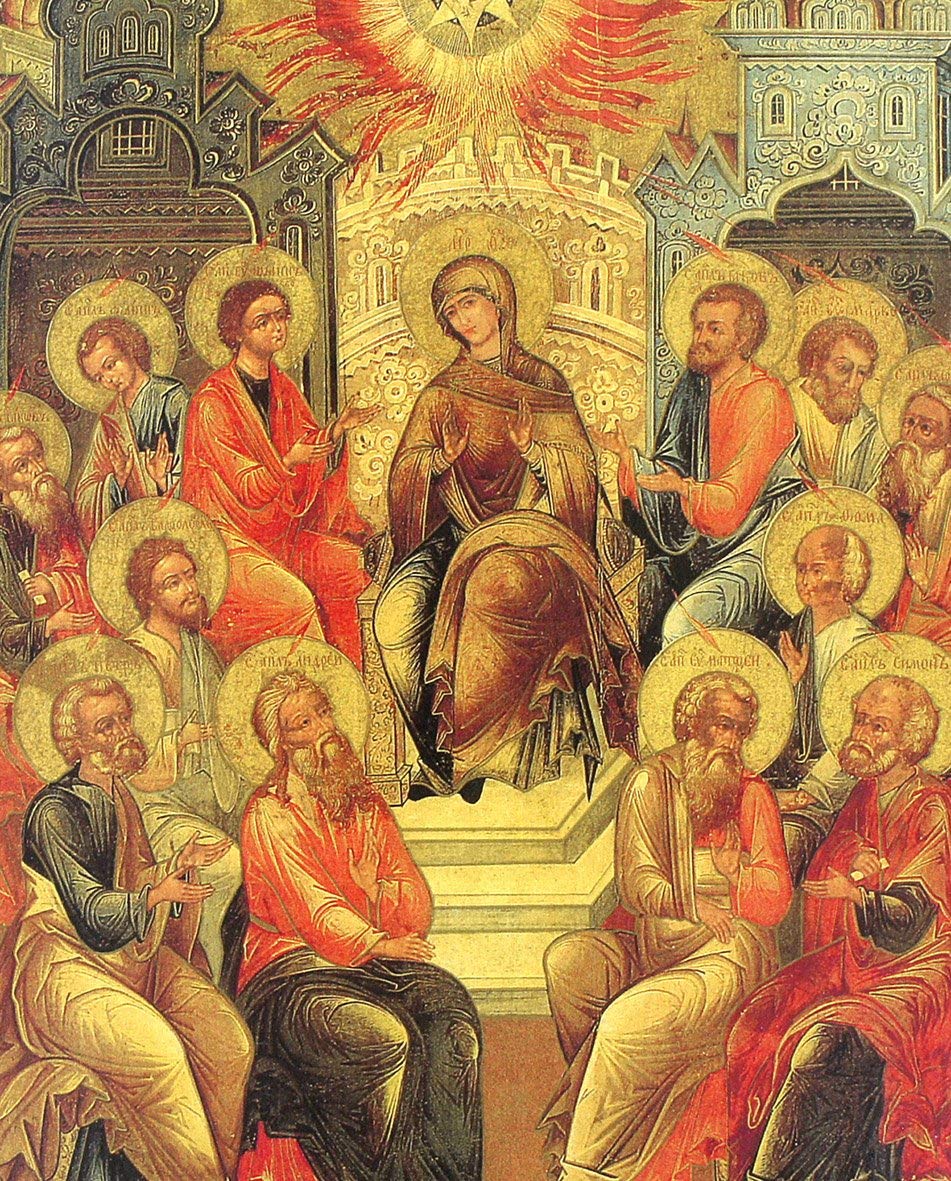The Orations for the Gift of Tears
 A reader of Vultus Christi who signs himself “Mark of the Vineyard” asked that I post something about the so-called Votive Mass for the Gift of Tears. This particular formulary is not a complete Votive Mass in the strict sense of the term in that it is composed only of a Collect, Secret, and Postcommunion. These texts would be used in conjunction with another Mass Proper as secondary orations following those of the Mass of the day. Curiously, the orations for the Gift of Tears disappeared from the reformed Missale Romanum of 1969 (together with the orations asking for the gift of Continence, but that’s another story!) only to be reinstated in the 2002 edition of the same reformed Missale Romanum.
A reader of Vultus Christi who signs himself “Mark of the Vineyard” asked that I post something about the so-called Votive Mass for the Gift of Tears. This particular formulary is not a complete Votive Mass in the strict sense of the term in that it is composed only of a Collect, Secret, and Postcommunion. These texts would be used in conjunction with another Mass Proper as secondary orations following those of the Mass of the day. Curiously, the orations for the Gift of Tears disappeared from the reformed Missale Romanum of 1969 (together with the orations asking for the gift of Continence, but that’s another story!) only to be reinstated in the 2002 edition of the same reformed Missale Romanum.
The orations for the Gift of Tears are extraordinarily beautiful. Blessed Abbot Marmion, noted for his teachings on the grace of compunction, alludes to them more than once in his writings.
Collect
Almighty and most gentle God, who, didst cause a fountain of living water to gush forth from the rock in order to quench the thirst of Thy people; draw from our hardened hearts tears of compunction, that we may be able to mourn for our sins and merit their forgiveness from Thy mercy.
Secret
Mercifully regard, O Lord God, the offerings which we make to Thy majesty for our sins and draw from our eyes a flood of tears with which to quench the burning flames which we deserve.
Postcommunion
Mercifully pour into our hearts, O Lord God, the grace of the Holy Spirit, which by sighs and tears may wash away the stains of our sins, and obtain for us, by Thy bounty, the pardon which we desire.


Dear Father,
This article (OSB !) has been very helpful to me, so I thought I would share it..
THE DOCTRINE of PENTHOS
and THE GIFT of TEARS
Luke Dysinger, O.S.B.
St. John at the Foot of the Cross
Beaumetz, 1392
entry in forthcoming: The New SCM Dictionary of Christian Spirituality
ed. Philip Sheldrake, (SCM Press, 2005) ISBN: 0 334 02984 8
THE tears that accompany repentance, conversion and inward renewal are linked both in the scriptures and in the later Christian spiritual tradition with the concept of penthos, “mourning” that purifies the soul. In the Old Testament penthos is especially mourning for the dead expressed in tears and lamentation; but it is also the sorrow and grief that accompanies prophesied disaster. Similarly, penthos in the New Testament is also mourning with tears; but it is a grief that leads to a determination to act or change (2 Cor .12:21; Rev. 18).
THE Christian doctrine of tears/penthos flowers in the fourth-century deserts of Egypt. To weep for one’s sins was for many desert fathers the central and all-encompassing act of monastic piety (Sayings, Latin syst. col. bk. 3). The hermit Evagrius Ponticus (d. 399) recommends that one begin with tearful prayer in order to “calm the wildness within the soul” and obtain forgiveness of sins (on Prayer, 5-6). Prayer with tears is a gift one should request from God, but tears and penthos are not ends in themselves: they afford humility and lead to pure prayer, eventually to that simplest and purest of all prayer that is contemplation. If, however, one becomes overly preoccupied with tears, their presence can become a cause of pride and thus of sin: “you have turned the antidote of passion into a passion” (on Prayer, 7-8).
JOHN Climacus (d. 649), whose Ladder of Divine Ascent is read each Lent by every Orthodox monk and nun, compares tears shed in prayer with the sacrament of baptism. Such tears, he claims, are in one sense greater than baptism itself: namely, that they wash away post-baptismal sin. Such tears are also a sign that we have received the gift of love, and that our prayers have been accepted by God (Ladder 7). Symeon the New Theologian (d.1032) extols and describes two kinds of tears: bitter tears of repentance and fear; and sweet tears of joy. He does not stress this distinction, however; and he describes both mingled sorrow for sin and delight at forgiveness, as well as a progression from sorrow to joy. He likens prayer with tears to a second baptism, and regards tears as a preparation for contemplation and the indwelling of the Holy Spirit. But tears are not only a means of preparation, they are for Symeon the sign of the Spirit’s indwelling “in light and fire”: “When a person has the light of the Holy Spirit inside himself . . . he pours forth a ceaseless flood of tears that both refreshes him and arouses the flame of his longing. These tears of his become even more copious; and having been purified by their flood, he shines forth even more brilliantly” (Theol. Chapters 3.21).
IN the Christian West, too, compunction and prayer with tears are highly regarded. John Cassian, like his master Evagrius, encourages tears during prayer which he regards as one – but only one – of the signs of genuine compunction. Compunction, literally the sense of being “inwardly pierced”, may be manifested in a variety of ways: shouts of joy; profound silence; inarticulate groans; “floods of tears” (Conf. 9, 27). Cassian describes the many different states tears can express: repentance from sin; longing for heaven; meditation on the last judgment; compassion for the terrible state of hardened sinners. Like Evagrius, Cassian warns against too much reliance on tears, and stresses that they should never be forced (Conf. 9, 29-30). Other western spiritual writers who recommend tearful prayer include: Benedict of Nursia (Rule 4.57; 52.4); Peter Damian (d. 1072); Bernard of Clairvaux (d. 1153); Ruysbroeck (d. 1381); and Ignatius of Loyola (d. 1556).
FINALLY , it should be borne in mind that the frequency with which tears accompany prayer or any other spiritual practice may be heavily influenced by social and psychological factors. In the modern era in non-Mediterranean Europe and North America the public, external expression of most deep emotions is strongly discouraged; and for this reason the gift of tears may be uncommon. In the relative absence of this traditional sign of compunction, sincerity, and divine grace it may be well to recall Evagrius’ reminder that tears are not a goal but rather a means towards the goal of humble, honest conversation with God.
FOR FURTHER READING:
I. Hausherr, Penthos, the Doctrine of Compunction in the Christian East, (Cistercian publ, 1982)
R. E. Sinkewicz, tr., Evagrius of Pontus, the Greek Ascetic Corpus, “Chapters on Prayer”, (Oxford U. Pr., 2004).
B. Ramsey, tr., John Cassian, The Conferences, “Conference 9”(Paulist, 1997).
C. Luibheid, tr., John Climacus, The Ladder of Divine Ascent (Paulist, 1982).
P. McGuckin, tr. Symeon the New Theologian: The Practical and Theological Chapters, and the Three Theological Discourses, (Cistercian publ. 1982)
This Webpage was created for a workshop held at Saint Andrew’s Abbey, Valyermo, California in 2003
Dear Father Mark,
I thank you very much for this post. Reading your blog is like feeding honey to my soul. God bless you!
Loupee, thank you kindly for sharing that precious article!
Dear Fr.,
Many thanks! I’m still learning about our “lost” heritage. Having only heard abou the “gift of tears” from Eastern sources, you might imagine how surprised I was when I was told that there was such a thing as a “Mass for the Gift of Tears”!
So much that we “lost”. I feel very cheated, especially considering that there is only ONE authorized Gregorian Mass in the whole country (but I thank God for it none the less!).
So this is not a Votive Mass in the strictest sense. Interesting. How exactly would one include this in the Mass then? Add them as second collect, second secret, etc?
I guess I should check the ’62 Missal to discover more of these gems.
Thank you once again for posting this. I am very grateful!